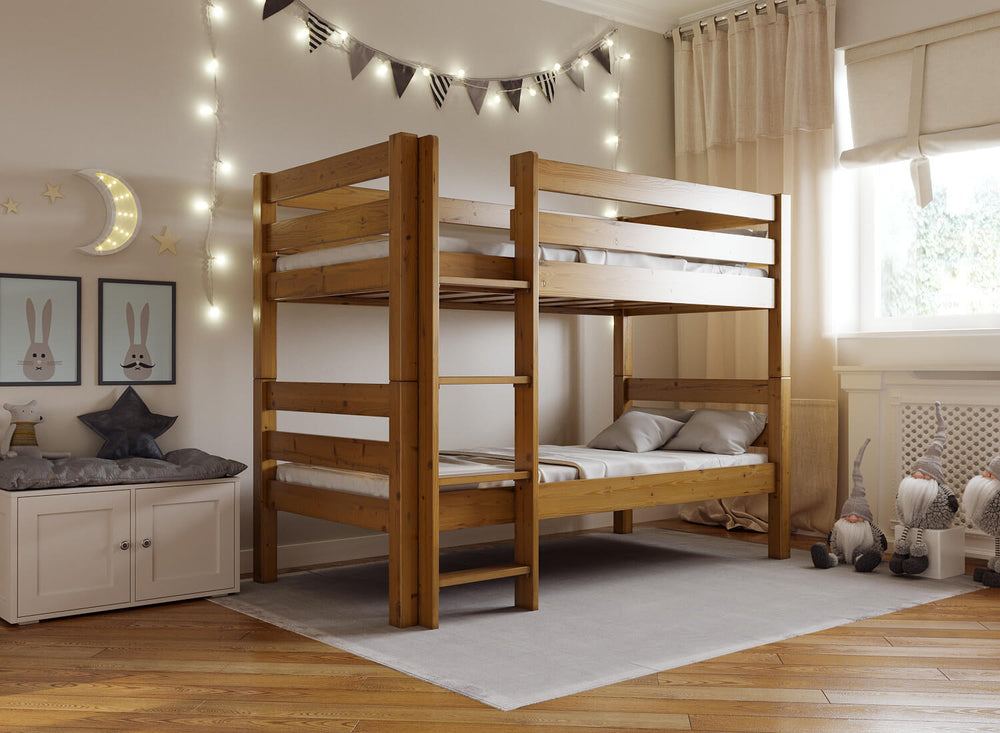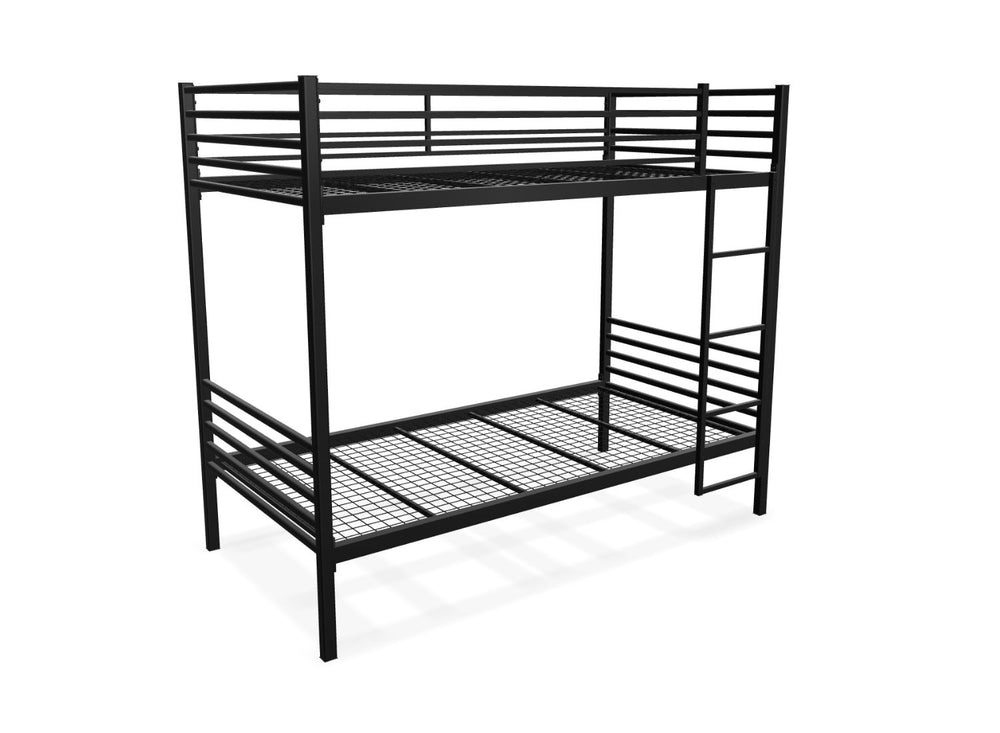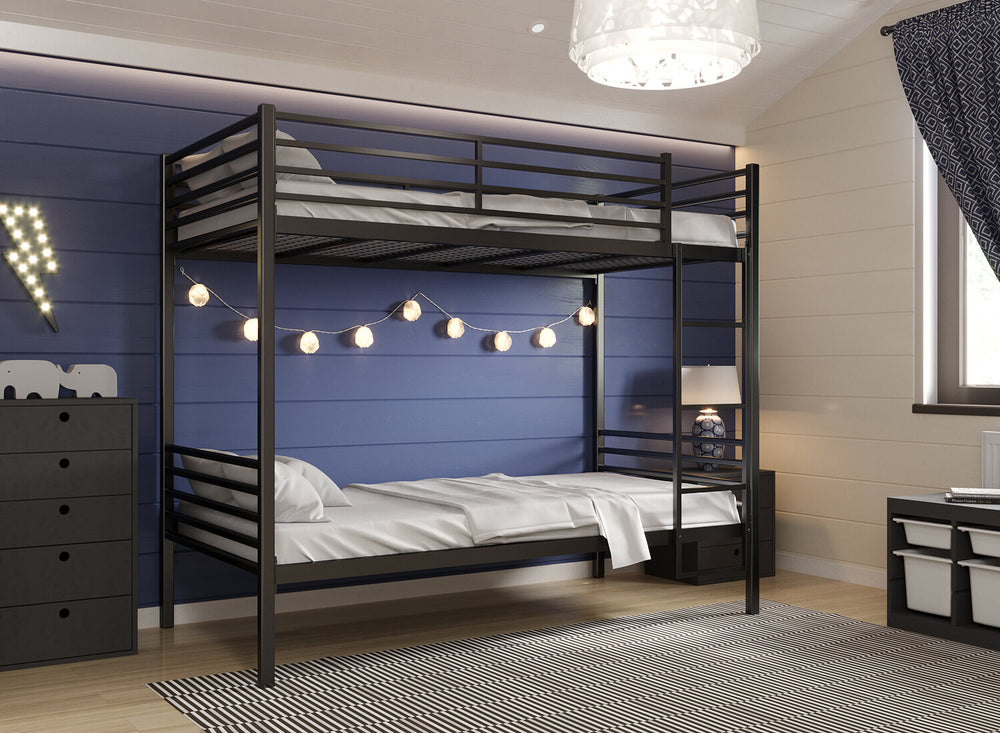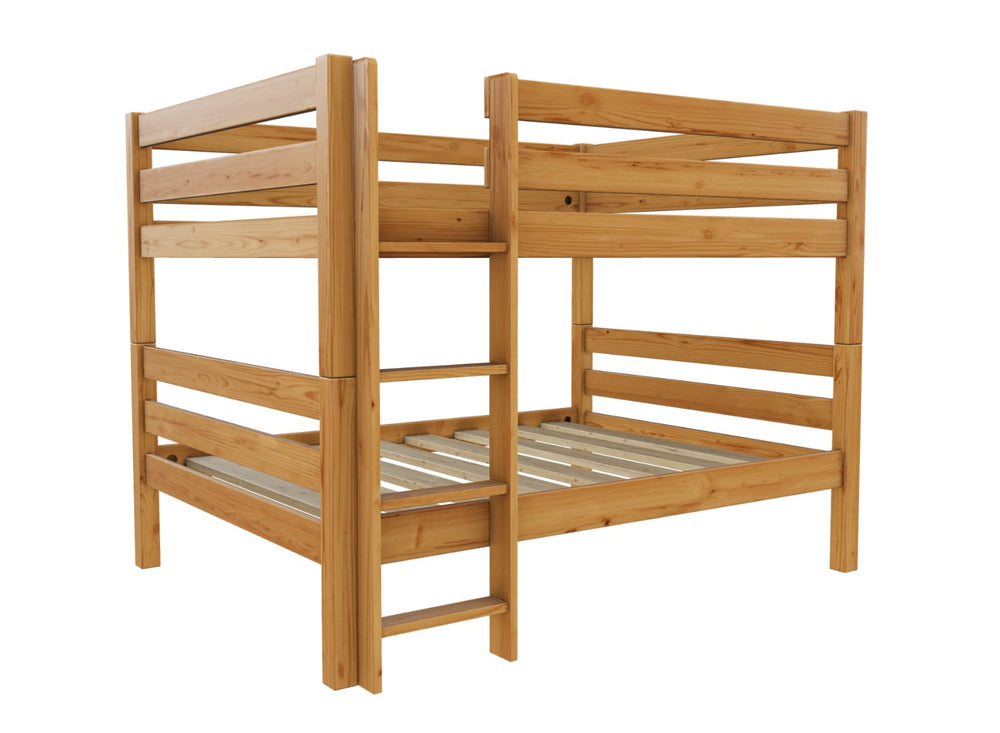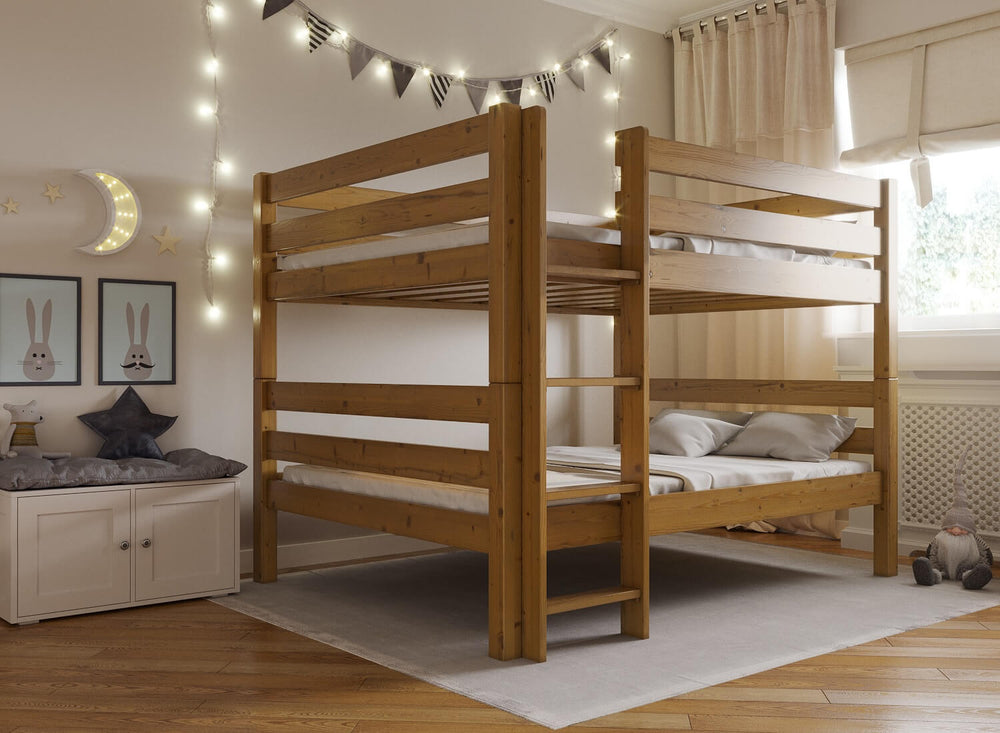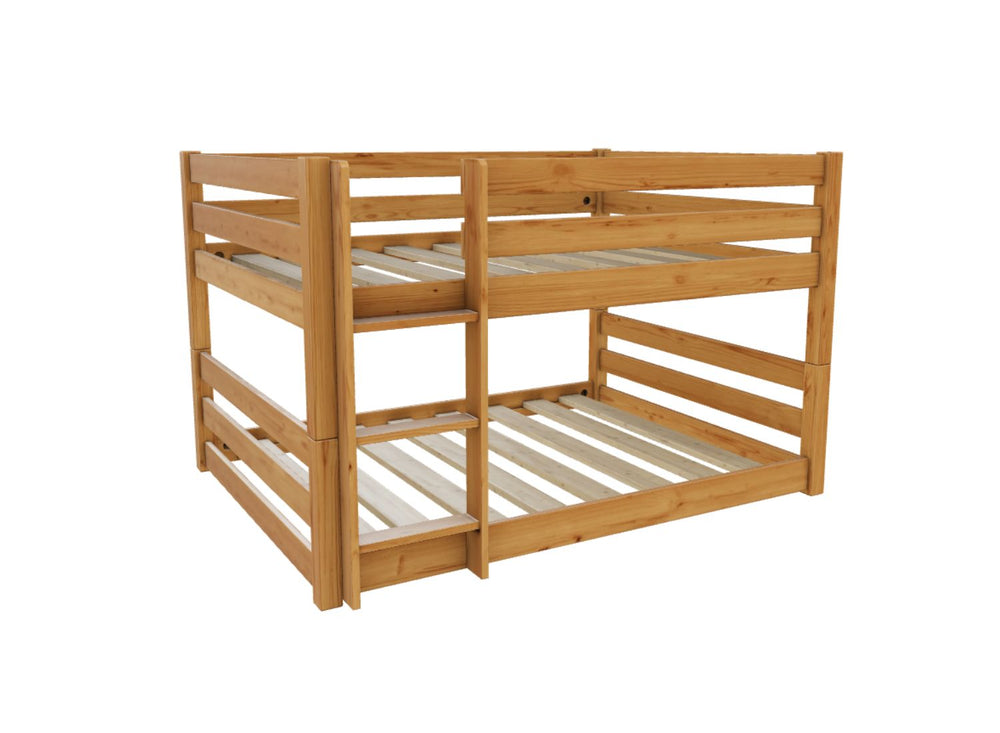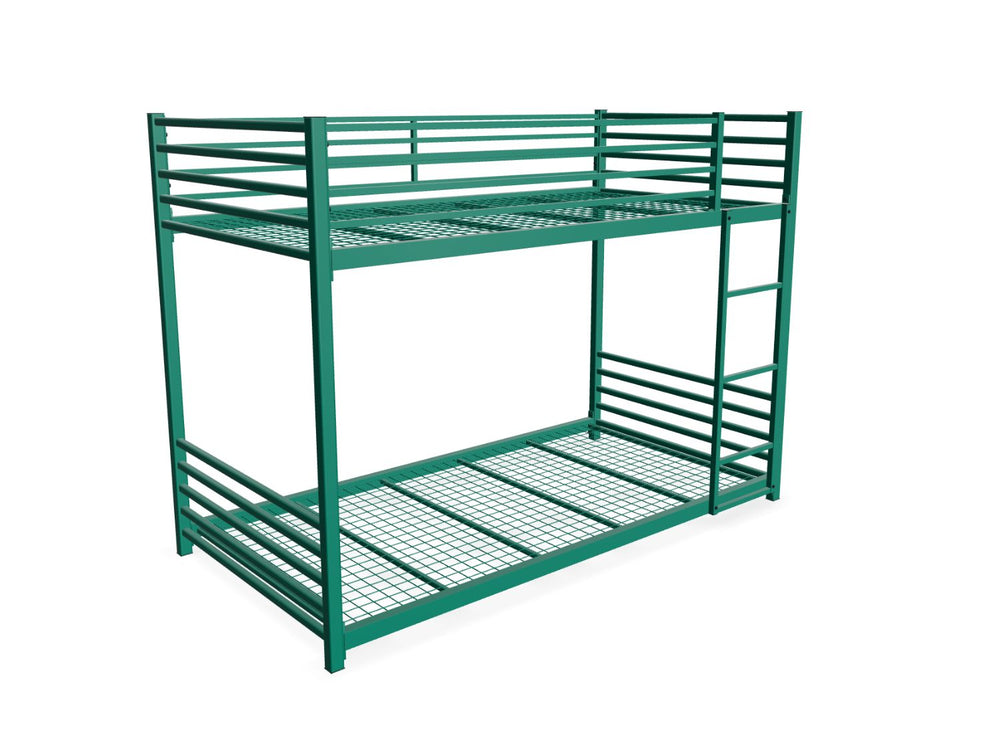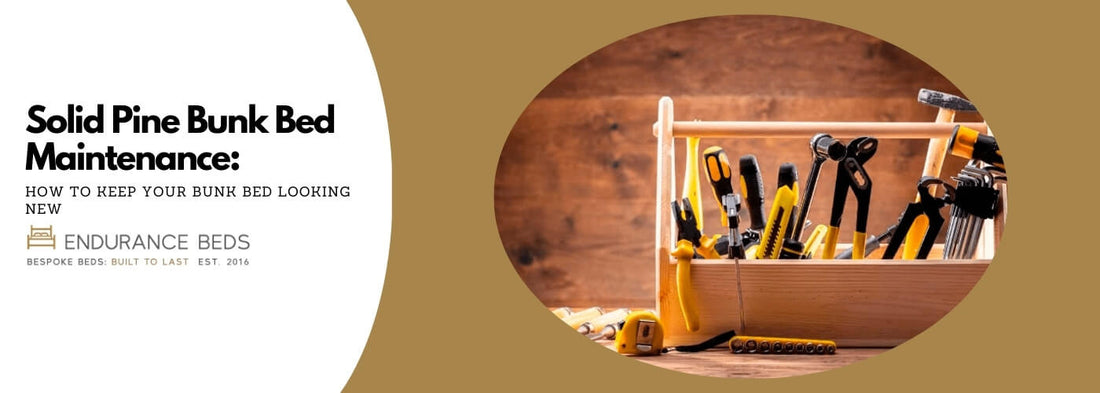
Maintaining your solid pine bunk bed is essential to ensure its longevity, aesthetics, and safety. Pine bunks are a popular choice due to their durability and timeless appeal. However, like all wooden furniture, they require proper care to keep them looking new and functioning well.
In this blog post, we will explore essential pine bunk bed maintenance tips, effective cleaning methods, polishing techniques, and ways to handle minor repairs. Let's dive into the best practices for maintaining your solid pine bunk bed.
Pine Bunk Bed Maintenance Basics
Regular Dusting
One of the simplest yet most effective bunk bed care tips is regular dusting. Dust can accumulate on the surface and in the crevices of your bunk bed, leading to a dull appearance and potential damage over time. Use a soft, dry cloth or a microfiber duster to gently remove dust. For hard-to-reach areas, a vacuum with a brush attachment can be helpful.
Avoid Direct Sunlight
Exposing your bunk to direct sunlight can cause the wood to fade and become discoloured. To prevent this, position your bunk bed away from windows or use curtains and blinds to filter the sunlight. If moving the bed isn't an option, consider using UV-protective coatings to shield the wood from harmful rays.
Temperature and Humidity Control
Wood is sensitive to changes in temperature and humidity, which can cause it to expand and contract, leading to cracks or warping. Maintain a consistent indoor climate to protect your bunk bed. Use a humidifier in dry conditions and a dehumidifier in humid conditions to keep the humidity level between 40-60%.

Product: Wooden Bunk Bed Finished in Oak
Cleaning Methods for Solid Pine Bunk Beds
Gentle Cleaning Solutions
When it comes to cleaning your pine bunk, gentle solutions are best. Avoid harsh chemicals that can strip the wood of its natural oils and damage the finish. Instead, use a mixture of mild dish soap and warm water. Dampen a soft cloth with the solution and wipe the surface, then dry immediately with a clean cloth to prevent moisture damage.
Deep Cleaning
For deeper cleaning, a mixture of vinegar and water can be effective. Mix equal parts of white vinegar and water in a spray bottle. Lightly mist the surface and wipe with a soft cloth. Vinegar helps to remove grime and disinfect the wood. Always dry the surface thoroughly to avoid moisture build-up.
Tackling Stains
Stains can be a common issue, especially if the bunk bed is used by children. For light stains, a paste made of baking soda and water can be applied. Gently rub the paste onto the stain with a soft cloth and then wipe clean with a damp cloth. For tougher stains, consider using a wood cleaner specifically designed for pine.
Polishing Techniques
Natural Oils
Polishing your pine bunk bed helps to maintain its shine and protect the wood. Natural oils like olive oil or lemon oil are excellent choices. Apply a small amount of oil to a soft cloth and rub it into the wood following the grain. This not only enhances the wood’s natural beauty but also provides a protective barrier against moisture and dirt.
Commercial Polishes
There are also many commercial wood polishes available that are safe for pine. Look for polishes that are free of silicone, as silicone can build up over time and cause the wood to become sticky. Apply the polish according to the manufacturer’s instructions and buff with a clean cloth to achieve a smooth, glossy finish.
Waxing
Waxing is another great way to protect your bunk and keep it looking new. Use a high-quality furniture wax and apply it sparingly with a soft cloth. Allow the wax to dry for the recommended time, then buff it with a clean cloth to a soft sheen. Wax provides a durable finish that repels dust and moisture.

Handling Minor Repairs
Tightening Screws and Bolts
Over time, the screws and bolts holding your bunk bed together can loosen. Regularly check and tighten these to ensure the bed remains sturdy and safe. Use the appropriate tool, usually an Allen wrench or a screwdriver, to avoid stripping the screws.
Fixing Scratches and Dents
Minor scratches and dents are inevitable but can be easily fixed. For small scratches, use a wood touch-up pen that matches the colour of your pine bed. Simply fill in the scratch and blend it with a soft cloth. For deeper dents, a combination of wood filler and sandpaper can be used. Apply the filler, let it dry, and then gently sand it down to a smooth finish.
Addressing Loose Joints
If you notice any loose joints, it’s important to address them promptly to prevent further damage. Apply wood glue to the loose joint and clamp it until the glue dries. This will reinforce the joint and restore the bed’s stability. For added strength, consider using screws or brackets in conjunction with the glue.
Replacing Broken Slats
In the event of a broken slat, it's crucial to replace it to maintain the structural integrity of the bunk bed. Measure the broken slat and purchase a replacement piece of pine wood. Cut it to the correct size and sand the edges to prevent splinters. Secure the new slat in place using screws or nails.
Preventative Measures
Use Protective Pads
To prevent scratches and dents, use protective pads under the legs of the bunk bed, especially if it’s placed on a hardwood floor. These pads will help distribute the weight and prevent the legs from digging into the floor.
Regular Inspections
Conduct regular inspections of your bunk bed to identify any potential issues early. Look for signs of wear and tear, loose screws, or any other damage. Addressing these problems promptly can prevent them from becoming more serious and costly repairs.
Educate Users
If children are using the bunk bed, educate them on proper usage to avoid unnecessary damage. Teach them not to jump on the bed or use it in ways that could compromise its stability and safety.
Conclusion
Maintaining a solid pine bunk bed involves a combination of regular cleaning, polishing, and minor repairs. By following these maintenance tips, you can ensure that your bunk bed remains in excellent condition for years to come. Regular dusting, gentle cleaning solutions, natural oils for polishing, and addressing minor repairs promptly are all key to preserving the beauty and functionality of your wooden furniture.
Remember, preventative measures like using protective pads, controlling the indoor climate, and educating users can go a long way in keeping your bunk bed looking new. With proper care and attention, your bunk bed can continue to provide a safe, comfortable, and attractive sleeping solution for your household. Happy maintaining!

Shane Cousins

Marketing Executive
For the past five years, Shane has been a valued member of the Endurance Beds team, drawing on his degree and background in consumer insight research to shape engaging, design-focused content. He loves helping customers spark their own creativity, from colour matching to discovering new stylistic approaches for their bedrooms. "Working for a bed company taught me so much more than just product details. It introduced me to the science of sleep, the art of product matching, and how small choices can transform rest. I’ve since developed into a bit of a sleep expert, using what I’ve learned to share honest, practical advice through my content."



